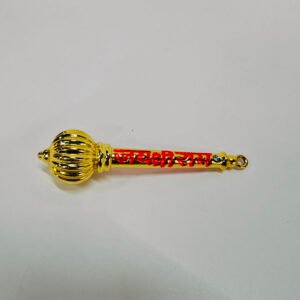The Divine Symbols: Shankh, Vishnu Tilak, and Chakra
In the realm of spirituality and Hinduism, sacred symbols play a pivotal role in connecting devotees with the divine. Among these, the Shankh (conch shell), Vishnu Tilak, and Chakra hold a special place. Let’s dive into the significance of these powerful symbols and how they enrich our spiritual journey.
The Sacred Shankh: A Call to the Divine
The Shankh, or conch shell, is not just a beautiful oceanic artifact but a revered symbol in Hinduism. Blowing the Shankh is believed to ward off negative energies and purify the surroundings. It is often used during rituals and prayers, marking the beginning and end of sacred ceremonies. The resonating sound of the Shankh is said to represent the primordial sound of the universe, invoking peace and harmony.
Vishnu Tilak: Mark of Devotion
The Vishnu Tilak, characterized by two vertical white lines often with a red or yellow mark in the center, is a distinctive symbol worn by followers of Lord Vishnu. This mark represents the feet of the deity and signifies the wearer’s devotion. Applying the Vishnu Tilak is a daily ritual for many, serving as a reminder of their faith and commitment to righteousness and divine protection.
The Powerful Chakra: Symbol of Protection and Order
The Chakra, or discus, is another significant symbol associated with Lord Vishnu. Known as the Sudarshana Chakra, it represents the cyclical nature of time and the protection of the universe. It is a weapon that symbolizes the destruction of evil and the maintenance of dharma (cosmic order). Devotees often wear Chakra symbols as pendants or rings to invoke the protective powers of the deity.
Incorporating these sacred symbols like the Shankh, Vishnu Tilak, and Chakra into daily practice can deepen one’s spiritual connection and bring a sense of peace and order. They remind us of the divine presence in our lives and the importance of maintaining purity, devotion, and righteous living.





Reviews
There are no reviews yet.